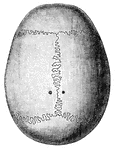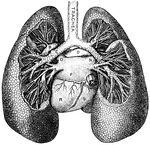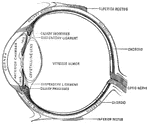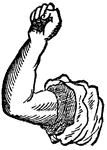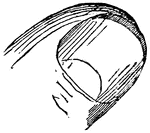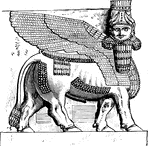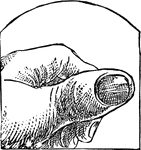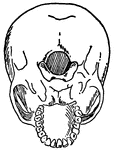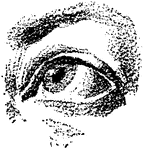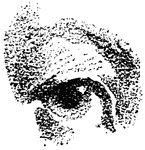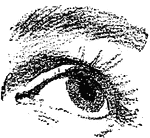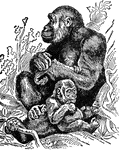
Female Gorilla
"The Gorilla is a celebrated anthropoid ape, generally belived to come nearer than any known one to…

Tomato Plant
"Tomato, or Love Apple, is a plant of the natural order Solanaceæ. It is one of a genus of several…
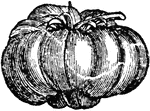
Tomato
"Tomato, or Love Apple, is a plant of the natural order Solanaceæ. It is one of a genus of several…

Tomato
"Tomato, or Love Apple, is a plant of the natural order Solanaceæ. It is one of a genus of several…

Human skeleton
"There are in all two hundred and six seperate bones in the adult skelton. The teeth are not bones,…

Human skull
"A, frontal bone; B, parietal bone; C, temporal bone; D, sphenoid bone; E, malar bone; F, upper jawbone;…
Spinal column
"The spine or backbone, serves as a support for the whole body. It is made up of a number of…
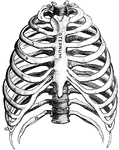
Thorax
"The ribs are long, flat, and curved bones which bend round the chest somewhat like the hoops…
Bones of the Foot
"The foot is built in the form of a half-dome or half-arch. This is to afford a broad, strong support…

Powerful Ligament at the Hip Joint
"The bones are fastened together, kept in place, and their movements limited, by tough and strong bands,…

Ligaments of the Foot and Ankle
"The bones are fastened together, kept in place, and their movements limited, by tough and strong bands,…

Broken Radius
"When a bone is broken, blood trickles out between the injured parts, and afterwards gives place to…

Broken Tibia
"When a bone is broken, blood trickles out between the injured parts, and afterwards gives place to…

Superficial Muscles of the Body
"A single muscle rarely or never contracts alone, but always in harmony with a number of other muscles.…

Achillles tendon
"Tendons are white, glistening cords, or straps, which connect the muscles with the bones." —…

Transverse section of the small intestine
"In the figure on the left are seen the artery and vein of a villus. In the right figure are represented…

Cross-section of a human hair
"Cross-section of One Half of a Human Hair. A hair is made up of horny cells of the outer layer of the…

Skeleton of the Mammoth
"Mammoth is a species of extinct elephant, the fossil remains of which are found in European, Asiatic…

Mandrake
"Mandrake is a perennial herb. From the rude resemblance of the bifurcated root to the human figure…

Compound microscope
"A Compound Microscope. The appearance of the various structures and tissues of the human body as revealed…

Lucian
"Lucian, the humorous satirist, was a native of Samosata, in Syria, and flourished towards the end of…
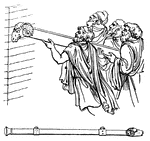
Aries
"The battering-ram, was used to batter down the walls of besieged cities. It consisted of a large beam,…
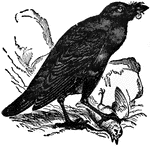
Raven
"The Raven is a large bird of the crow family. The raven has played an important part in mythology and…

Water Rice
"Rice is a well known genus of grasses, having panicles of one-flowered spike-lets, with two very small…

Sphinx
"Sphinx is a Greek word signifying 'strangler,' applied to certain symbolical forms of Egyptian origin,…
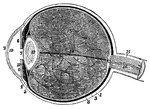
Human Eye
1, the sclerotic thicker behind than in front; 2, the cornea; 3, the choriod; 6, the iris; 7, the pupil;…
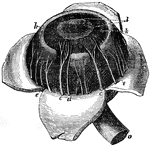
Human Eye
c, ciliary nerves going to be distributed in iris; d, smaller ciliary nerve; e, veins known as vasa…

Human Eye
The iris and adjacent structures seen from behind. 1, the divided edge of the three coats, the choroid…
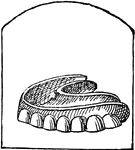
Teeth
The series of small bones attached to the jaws of animals, or human beings, which serve the purpose…

Human skeleton
"The human body, like a great building, has a framework which gives the body its shape and provides…
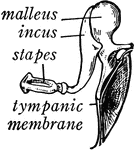
Bones of the Ear
"Across the middle ear a chain of three small bones stretches from the tympanic membrane to the inner…

Eyeball
"The most essential parts of human vision are contained in the eyeball, a nearly spherical body, about…
